
By Bob Difley
RVers and normal people call camping without hookups boondocking, regardless of whether it is on the baking black asphalt in a Walmart parking lot or so far back an old forest service logging road even the coyotes can’t find it.
But you rarely see a magazine ad photo of that sparkling new 40-foot diesel pusher in a Walmart parking lot. So if what you see in the RV ad–a canopy of lofty pine trees on the edge of a wildflower strewn meadow with a gurgling mountain stream flowing through it–looks like the campsite you picture your RV in, then I have news for you. You’re going to have to discover it for yourself, because it won’t be in a Walmart parking lot and it won’t be in a campground either.
Those campsites are called “dispersed” by the Forest Service and BLM, which is a good word for them. They are scattered about, with no directional signs leading you to them, sometimes no room for more than one or two vehicles, not identified in any printed directions, nor located on official maps. They are the best kept secrets of boondockers that have taken the time and effort to find them. So how do you find them?
It is not usually efficient to find a one night free boondock stopover while enroute to a destination, but rather when you have a few days or longer to stay in one place, and are willing to take some extra time to find just the right campsite. One of these options below will work, depending on your and the area’s circumstances, and how much time you have to look.
- Ask at the ranger station or office for directions to any dispersed camping areas that they know of. If you are lucky you will find a patrolling ranger who knows. Buy a map of the forest that shows even the dirt back roads, as well as any photocopied maps they may have. Ask for them. They may not be out and visible.
- Ask other RVers who have been to the forest you are headed for if they know of any dispersed camping areas. If they’re nice–and you’re nice–they might even tell you.
- Head for a forest service designated campground for the first night, then the next day take your tow or toad and explore the side roads for campsites and then move to one.
- Drive slowly through the forest (don’t back up traffic, though) looking for dirt roads that look like logging trucks use (as against jeep trails).
- If you are driving a truck camper, just pull right in and look for a spot, but don’t go any deeper than what looks adequate for a turnaround. If you are adventurous, go for it, even though you may end up backing out if you can”t find a turnaround–which isn’t likely.
- Motorhome drivers, if you are towing, and can see wide spots or probable campsites ahead continue on. I usually unhitch and drive the toad in looking for campsites. When we find a suitable one, we return and pick up the MH and head for the site. As we search we check for low limbs, tight turns, and other obstructions to be sure the MH will fit. If we don’t find a campsite, my wife drives on ahead looking for more dirt roads and I follow in the motorhome. It may take a half hour or more, but eventually you will find a dispersed site.
- If you are towing a fiver or trailer, it is a bit more difficult. I suggest that instead of turning onto an unfamiliar dirt road and being confronted with a sudden narrowing or no place wide enough to turn around, you pull off to the side of the main road–providing there is shoulder enough to get off the road–and park. Then walk in a hundred yards or so and you should be able to tell what lies ahead, or even find a spot just off the road. Even if you find only a so-so spot, stay one night and explore the next day with your truck for a better one.
Over time you will find lots of dispersed campsites. Record them all on your GPS or in a camping log book complete with coordinates, directions, mileage markers, visual signs, and landmarks, so that you can find them again. Your favorite one might be taken, but with backups you can just choose another one. And, you also then have something to share, and can swap dispersed campsite information with other boondockers. And remember–leave your campsite cleaner than you found it.
Check out our Healthy RV Lifestyle website for more RV stuff and my ebooks, BOONDOCKING: Finding the Perfect Campsite on America’s Public Lands, and 111 Ways to get the Biggest Bang for your RV Lifestyle Buck.
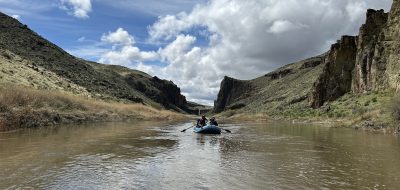
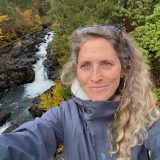
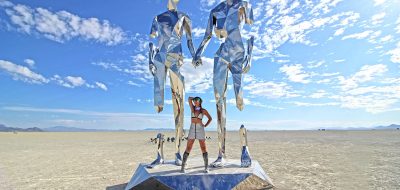

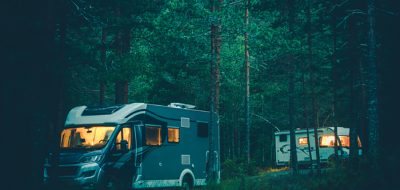

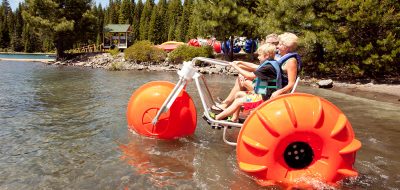
Dave Helgeson
More info on how to locate good boondock sites at:
http://rvlife.com/index.php/67-dave/2221-boondocking-101-finding-a-place-to-camp.html
Himself
Bob
Thanks again for another great and informative article. Some of the U.S. Forrest roads I have been down in my 30ft class-c .have left me wondering if we can get out of them’
I agree with Barry S “I love those types of sites. The biggest problem, however, that always seems to alert me is the possibility that those sites that are remote and, as such, may tend to attract party-goers who have already placed their claims on the same area, as evidenced by remnants of a circle of burned campfire rocks, beer cans, etc. It is easy these days for four-wheelers and dirt-bikers to access remote areas, and to pose a possible threat to the peace and quiet of boondockers.”
Sometimes it can be dangerous out there,
Thanks again for the great and informative article as usual
Sandy S
Most of the boondocking seems to be in the West. Are there any good spots in the Smokey Mountains in North Carolina?
Hockeyguy
I can appreciate the ability to get to a spot that is a little out of the way. I will on occasion go on a tenting trip for a couple of days at what is crown land . Crown land is land that is owned by the government and generally available to anyone to camp on. It can range from being near and easy to get to to being a couple of portages or hikes in. Generally these have little traffic and can be alot of fun.
This is basically true in all of Canada.
Bob Difley
Karen – In answer to your last question, yes, you can. But there is a “however” attached to that statement. With a 40-footer you will find fewer spots that you can fit into than if you were driving a truck camper. But those spots are there. I have stayed in several forest meadows surrounded by trees with a stream flowing through the meadow, but they are not as common as smaller spots carved out of a forest. The difficult part is finding them, and that takes exploration, talking to other RVers who have 40-footers, taking to rangers in forest service offices, and checking out a lot of forest service back roads. For you a good way to go about this would be to secure a campsite either near a national forest or in one of the forest service campgrounds where you fit, then take your toad or tow vehicle out and explore (using forest service maps that show dirt roads which you can get at the office for that forest). And when you do find locations that will fit you–even if you don’t stay in it–be sure to record its location along with directions, road mileage markers, and GPS coordinates. You may think you will easily find these places again until you start to look. Good luck. Bob
Geoffrey Pruett
These sites aare the second reason our A is 25 ft, the primary is keeping it next to the house in the driveway and still having driveway for a car. We are full width and height for an A plus a top carrier and still seem to fit in most remote spots. The lack of an overhang longer than our car makes fitting in little problem. Most of our “dry camping” is nearer finished buildings but without hookups but the quiet missing from most finished areas makes back areas pleasant.
Vickie
Barry S…thanks for bringing back a memory that I had tucked away. When I was a kid we would drive all day “looking at the country” and then put up the tent around sunset. One day, in Utah, we couldn’t find campgrounds and asked a farmer if we could camp overnight on his land. He was very accomodating and I remember getting my first view of a sweeping landscape and total peace. I agree with you. Try getting permissin from ranchers and landowners. BTW, we left the land as clean as we found it.
Barry S
I love those types of sites. The biggest problem, however, that always seems to alert me is the possibility that those sites that are remote and, as such, may tend to attract party-goers who have already placed their claims on the same area, as evidenced by remnants of a circle of burned campfire rocks, beer cans, etc. It is easy these days for four-wheelers and dirt-bikers to access remote areas, and to pose a possible threat to the peace and quiet of boondockers. For this reason, I prefer to also explore the possibility of asking permission of ranchers and private landowners if I can park on their property. So far, I have had good luck, and don’t have to worry about being bothered by irresponsible drunken partiers.
Tireman9
I just Googled Dispursed camping
Many links on this site
http://ourodyssey.blogspot.com/2008/05/dispersed-camping-on-public-lands.html
http://www.gypsyjournal.net/ltva_camping.htm
Good camping.
Tireman9
A little more info here
http://camping.about.com/od/campingadviceandtips/a/dispersedcamping.htm
catchesthewind
Yes do tell the availability for us big guys to experience the lofty canopy of pines
karen
This is great but can you provide a bit more specifics on what size RV could actually access dispersed campsites. Your article references a 40 foot motorhome, however the BLM and national forest lands here in central Oregon don’t appear to accommodate more than a 25 ft trailer. Is it really possible for us big guys to enjoy “a canopy of lofty pine trees on the edge of a wildflower strewn meadow with a gurgling mountain stream flowing through it” ???